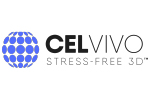Agilent provides xCELLigence impedance-based, label-free, real time cell analysis system and NovoCyte flow cytometers.
Automated microscopy and Spatial Proteomics
Automated microscopy and image analysis
Discover
Related topics
Study finds that automated liquid-handling operations are more robust, resilient, and efficient!

Jul 18, 2024
Liquid handling devices (LHD) improve lab efficiency and accuracy. They automate liquid transfers, increase experiment...
Scaling Whole-Genome Sequencing to >50,000 single cells using cellenONE

Jul 16, 2024
cellenONE technology enabled the creation of tens of thousands of high-quality single-cell genomes, paving the way for...
Theranostics: From Mice to Men and Back

Jun 25, 2024
Recorded webinar
Presenters: Prof. Dr. Ken Herrmann and Prof. Dr. Katharina Lückerath – Moderator: Hannah Notebaert
Automated Purification of Viral DNA and RNA from Biological Samples usingZymo Research Quick-DNA/RNA

Jun 14, 2024
The Quick DNA/RNA Viral MagBead Kit from Zymo has been automated with the Cybio FeliX pipetting robot from Analytik...
DNA Amplicon Library Preparation for Illumina® Sequencing

Jun 12, 2024
The precision of temperature control, efficient heating and cooling rates, and excellent temperature homogeneity across...
X-RAD 320 for irradiation therapy during quantifying study for in vivo collagen reorganization

Jun 5, 2024
Quantifying in vivo collagen reorganization during immunotherapy in murine melanoma with second harmonic generation...
High-frequency Ultrasound System For Preclinical Imaging

May 13, 2024
The Prospect T1 is an innovative high-frequency ultrasound system designed specifically for in vivo preclinical imaging...
April 2024 publication revealing benefits of using intravital microscopy in trascriptomics studies

May 7, 2024
Transcriptional activation of Bmal1 drives the inflammatory activity of monocytes by modulating mitochondrial unfolded...
Omics Studies of Tumor Cells under Microgravity Conditions

May 6, 2024
It is important for the analysis of data from space experiments to distinguish unspecific stress reactions from...
Column-Free CD14+ Monocyte Isolation using 50nm Superparamagentic Beads on MARS® Bar

Apr 25, 2024
The MARS® Bar Magnetic Separation Platform is a closed and automated isolation for cell therapy development and...

Jun 2, 2017
A variety of in vitro cellular systems are currently employed for analyzing T cell activation, yet all suffer from some combination of low throughput, unnatural conditions and long assay times. Label-free technologies are capable of detecting phenotypic responses to treatments under physiological conditions, thereby potentially accelerating drug discovery by facilitating the use of disease-relevant cell models for functional assessment and clinical diagnosis. The xCELLigence system is an impedance based label-free platform that allows for dynamic monitoring of subtle morphological and adhesive changes in cells, such as those induced during T cell activation. Here we describe the development and validation of a T cell activation assay based upon electrical impedance. Co-activation of Jurkat cells with anti-CD28 and anti-CD3 functional antibodies led to impedance changes that were rapidly and sensitively recorded (within 30 minutes). This phenomenon was also observed in human peripheral blood mononuclear cells. These changes reflect morphological and adhesive alterations correlated with cytoskeletal reorganization as verified by microscopy. They were functionally dependent on canonical T cell signaling pathways, including calcium-mediated signals and Src family kinases because relevant inhibitors impaired T cell activation. Our results provide a convenient approach to measure T cell activation in real-time and to elucidate the underlying mechanisms of action through probing with small molecules.
Brand profile
Agilent provides xCELLigence impedance-based, label-free, real time cell analysis system and NovoCyte flow cytometers.
More info at:
www.aceabio.com